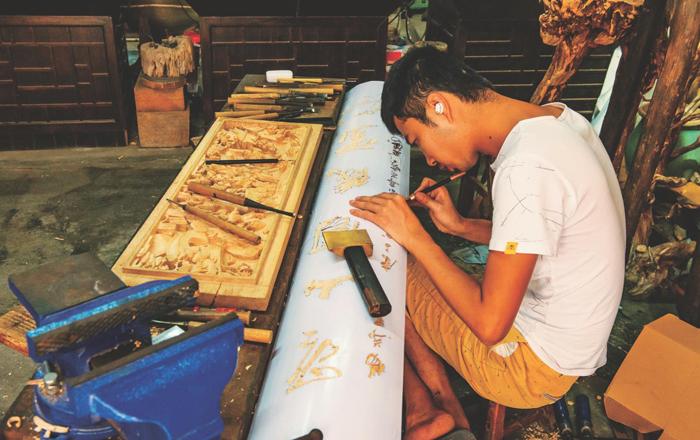Paint the Town
2020-12-21孟庆春
孟庆春



A centuries-old village in Anhui becomes a magnet for artists。
千年古村里的詩意与烟火气。
They arrive with a clatter of suitcases on cobblestone, eyes trained to look for beauty. Here where the river twists under the graceful arch of a bridge, or reveals the swan-like reflection of a whitewashed home, there could be a perfect place to stop and paint away the afternoon.
Zhaji, nicknamed “Painters Village,” boasts the largest collection of ancient Hui-style architecture in southern Anhui province—over 140 homes, ancestral halls, and temples dating back to the Yuan (1206 – 1368), Ming (1368 – 1644), and Qing (1616 – 1911) dynasties. More remote and lesser known than its UNESCO-honored neighbors Xidi and Hongcun, the village is a magnet for artists and art students seeking a tranquil throwback to the Jiangnan (“south of the Yangtze”) scenery immortalized in ink paintings throughout centuries.
Yet as the black-tiled courtyards transform into secluded studios, and tourists come to peek at transformation, the fight is on to save Zhaji from the overly refurbished and commercialized fate of other “historical” sites. “When it comes to tourism, money is everything,” fretted photographer Meng Qingchun, who has visited ancient towns all around China. As the country shifts the tenor of its economic development from the city to the villages, locals and officials are warming to the value of preserving pastoral scenery.
Under Mengs lens, life in Zhaji seems to go on as centuries before. Save for a few villagers selling plastic souvenirs, most of those who traverse the pebbled paths are toting produce or laundry bound for the river. With few tourists yet venturing their way, made fewer still by the Covid-19 pandemic, traditional artisans ply their crafts in peace: carving wooden lattices, and stenciling the words of poetry that originally made their community famous—that perhaps couldnt have been penned anywhere without such a reputation for beauty.
